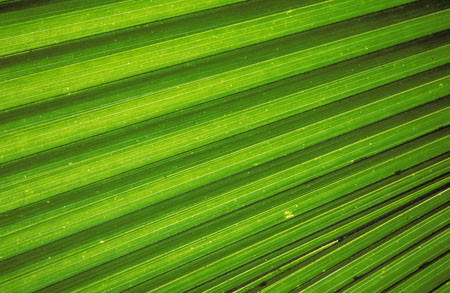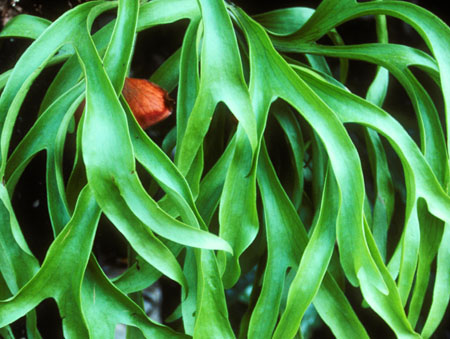 Patterns may be found everywhere in nature, and some plants are particularly rewarding in this respect. In many cases such shots are taken using a macro lens at close range, so light and depth of field present challenges which must be overcome. Close ups of leaves, palm fronds or bark, and the arrangement of spiky grasses or numerous similar stems are examples of simple but potentially rewarding patterns. When taken very close up, images of this sort may become almost abstract in nature.
Patterns may be found everywhere in nature, and some plants are particularly rewarding in this respect. In many cases such shots are taken using a macro lens at close range, so light and depth of field present challenges which must be overcome. Close ups of leaves, palm fronds or bark, and the arrangement of spiky grasses or numerous similar stems are examples of simple but potentially rewarding patterns. When taken very close up, images of this sort may become almost abstract in nature.
When searching for patterns, look for aesthetically pleasing repetition or distribution of shapes or similar picture elements. Shape repetition is relatively easy to find, for instance within groves or trees. The black-and-white spotted trunks of silver birch trees often make an ideal subject.
Patterns take many forms, some consisting of little more than parallel lines and others having a much more complex structure. The image opposite shows the diverging ridges in a palm leaf and has become more or less abstract. Other patterns feature "disturbances" where a regular patterns is broken by a nonconforming element such as a line traversing all the others in the pattern, or perhaps of a different weight or colour. The disturbing element then becomes the focus of the image.
 Irregular spacing and grouping of picture elements can also create interesting patterns given an aesthetically pleasing balance. A group of several blooms balanced by a single bloom elsewhere in an image can work well.
Irregular spacing and grouping of picture elements can also create interesting patterns given an aesthetically pleasing balance. A group of several blooms balanced by a single bloom elsewhere in an image can work well.
Irregular and chaotic patterns such as the one on the left are easy to find, although the inclusion of a contrasting element helps to provide a focal point. The red leaf was placed by nature - not the photographer! As with other areas of photography, go closer to find another pattern.






